Crack Resistance of Prestressed Reinforced Concrete Beams with Wire Rope Reinforcement
Abstract
:1. Introduction
2. Materials and Methods
3. Results and Discussion
4. Conclusions
- The formation and development of cracks in bendable elements made of ceramporite concrete with cable reinforcement are similar to those in elements made of heavy concrete;
- There is a linear relationship between the level of crack formation and the level of compression of prestressed ceramporite concrete bendable elements;
- Accounting for the influence of prolonged prestressing of ceramporite concrete on its mechanical properties ensures the best convergence of theoretical and experimental cracking moments when using the coefficient in the design formulas of the codes;
- When calculating the crack width of ceramporite-reinforced concrete elements under short-term loading, the expression provided by the codes can be used by substituting the variable modulus of elasticity of the reinforcement ;
- In bendable elements with cable reinforcement, both in heavy concrete and ceramporite concrete, as the level of prestress increases from 0 to 0.9 σ0.2, the ratio of the moment at which acrc = 0.15 mm to the ultimate moment increases almost linearly;
- In ceramporite concrete bendable elements with cable reinforcement, the level of moments corresponding to crack opening acrc = 0.15 mm is lower by 6–12% compared to elements made of heavy concrete, and it depends on the magnitude of prestress;
- The crack width under repeated loading exceeds the crack width under initial loading, which can be determined using the formula provided by the design codes with the coefficient φb equal to 1.15;
- The experimental research data confirm the reliability of the code requirements regarding crack closure in bendable elements of the 2nd category of crack resistance made of ceramporite concrete with cable reinforcement.
- New experimental results on the crack resistance of prestressed beams made of ceramporite concrete reinforced with wire rope reinforcement were obtained based on the conducted research;
- An improved calculation method for flexural elements based on the characteristics of ceramporite concrete and the real deformation diagram, considering the effects of wire rope prestressing, was proposed;
- Formulas for determining the mechanical properties of concrete and reinforcement, the degree of prestressing of the reinforcement, and the stiffness of crack-free sections taking into account concrete compression were introduced;
- Formulas for determining the crack resistance of prestressed ceramporite concrete beams reinforced with wire rope reinforcement subjected to short-term and repeated loads were recommended.
Author Contributions
Funding
Data Availability Statement
Acknowledgments
Conflicts of Interest
References
- KMK 2.03.01-21; Concrete and Reinforced Concrete Structures. RUz MS: Tashkent, Uzbekistan, 2021.
- Berdichevsky, G.I.; Tarshin, V.A. Crack Closure under Load of Prestressed Elements. Intersectoral Issues of Construction. Domestic Experience. Reference Information; TsINIS Gosstroy of the USSR: Moscow, Russia, 1972; No. 7. [Google Scholar]
- Mikhailov, K.V. On the appointment of the category of crack resistance of prestressed reinforced concrete structures. Concr. Reinf. Concr. 1964, 8, 295–297. [Google Scholar]
- Mikhailov, K.V.; Selyukov, V.M. On the stressed state of reinforced concrete beams under repeated repeated loads. Concr. Reinf. Concr. 1963, 8, 341–345. [Google Scholar]
- Gvozdev, A.A.; Dmitriev, S.A. Calculation of pre-stressed, ordinary reinforced concrete and concrete sections for crack formation. Beton Zhelezobeton 1957, 5, 7–12. [Google Scholar]
- Gvozdev, A.A. On the nearest prospects of calculating structures according to ultimate limit states. In Development of Calculation Methodology according to Ultimate Limit States; Stroyizdat: Moscow, Russia, 1971; pp. 38–43. [Google Scholar]
- Gvozdev, A.A.; Dmitriev, S.A.; Petrova, K.V. Strength and Structural Changes and Deformation of Concrete; Stroyizdat: Moscow, Russia, 1978. [Google Scholar]
- Mikhailov, V.V. Calculation of strength and crack resistance of pre-stressed reinforced concrete structures. In Research on Ordinary and Pre-Stressed Reinforced Concrete Structures; Stroyizdat: Moscow, Russia, 1949. [Google Scholar]
- Mikhaylov, K.V. On the Classification of Crack Resistance Category for Prestressed Reinforced Concrete Structures. Concr. Reinf. Concr. 1964, 7, 295–297. [Google Scholar]
- Berdichevsky, G.I.; Tarshin, V.A. Crack Closure in Pre-Stressed Elements under Load; Mezhotraslevye Voprosy Stroitel’stva. Otechestvennyy opyt. Referativnaya informatsiya; TSINIS Gosstroya SSSR: Moscow, Russia, 1972; No. 7. [Google Scholar]
- Gushcha, Y.P. Investigation of crack width in normal conditions. In Strength and Stiffness of Reinforced Concrete Structures, Proceedings of the Scientific Research Institute of Reinforced Concrete, Moscow, Russia, 1971; State Construction of the USSR: Moscow, Russia, 1971; pp. 72–97. [Google Scholar]
- Gushcha, Y.P.; Goryachkov, B.P.; Rybakov, O.M. Investigation of the nature of elastic-plastic deformations of rod prestressed reinforcement. In Effective Types of Reinforcement for Reinforced Concrete Structures; Stroyizdat: Moscow, Russia, 1970; pp. I65–I80. [Google Scholar]
- Gushcha, Y.P. Investigation of strength of bendable reinforced concrete elements reinforced with high-strength rod reinforcement. In Strength, Deformability, and Crack Resistance of Reinforced Concrete; Stroyizdat (State Publishing House of Literature on Construction and Architecture): Rostov-on-Don, Russia, 1968; pp. 96–103. [Google Scholar]
- Maylyan, R.L.; Mekeryov, B.A. Method for calculating normal sections of reinforced concrete elements taking into account the non-elastic work of reinforcement and prestressing effect. In Questions of Strength, Deformability, and Crack Resistance of Reinforced Concrete; RISI: Rostov-on-Don, Russia, 1982. [Google Scholar]
- Maylyan, R.L.; Ganaga, P.I. On the ultimate level of reinforcement prestress. Beton i Zhelezobeton 1984, 15, 136–148. [Google Scholar]
- Askarov, B.A.; Nuritdinov, K.N. Study of the physical and mechanical properties of structural lightweight concrete from local raw materials. In Building Materials and Engineering Equipment of Buildings; Publishing House of Tashkent Polytechnic Institute: Tashkent, Uzbekistan, 1983; pp. 60–62. [Google Scholar]
- Askarov, B.A.; Zufarov, G.K. Method for calculating the strength of normal sections of bendable reinforced concrete elements with mixed reinforcement, taking into account the actual deformation diagrams of the reinforcement. In Questions of Strength, Deformability, and Crack Resistance of Reinforced Concrete; RISI: Rostov-on-Don, Russia, 1984; pp. 118–125. [Google Scholar]
- Askarov, B.A.; Khasanov, S.S. Strength of lightweight concrete after precompression. In Questions of Strength, Crack Resistance, and Deformability of Reinforced Concrete; RISI: Rostov-on-Don, Russia, 1983; pp. 151–160. [Google Scholar]
- Semenov, A.I.; Varedamyan, K.G. Strength of pre-stressed light-concrete bendable elements with strand reinforcement. In Questions of Strength and Deformability of Reinforced Concrete; RISI: Rostov-on-Don, Russia, 1973; pp. 35–47. [Google Scholar]
- Hakimov, S.A. Study of Centrally and Eccentrically Precompressed Reinforced Concrete Bendable Elements with Different Sizes of Concrete Cover. Abstract of the Dissertation for the Degree of Candidate of Technical Sciences. Master’s Thesis, Scientific Research, Design, and Technological Institute of Concrete and Reinforced Concrete, Moscow, Russia, 1970. [Google Scholar]
- Sarkis Fernandez, A.I.; Sullivan, T.J.; Brunesi, E.; Nascimbene, R. Assessment of the torsional behaviour of hollow core slabs. Bull. N. Z. Soc. Earthq. Eng. 2023, 56, 104–114. [Google Scholar] [CrossRef]
- Sarkis, A.I.; Sullivan, T.J.; Brunesi, E.; Nascimbene, R. Investigating the Effect of Bending on the Seismic Performance of Hollow-Core Flooring. Int. J. Concr. Struct. Mater. 2023, 17, 18. [Google Scholar] [CrossRef]
- Li, Z.; Liu, J.; Liu, H.; Zhao, H.; Xu, R.; Gurkalo, F. Stress Distribution in Direct Shear Loading and its Implication for Engineering Failure Analysis. Int. J. Appl. Mech. 2023, 15, 2350036. [Google Scholar] [CrossRef]
- Zaytsev, Y.V.; Shcherbakov, E.N. On the Justification of Some Criteria for the Calculation of Prestressed Reinforced Concrete Elements; Report to the VIII Congress of FIP; Stroyizdat (State Publishing House of Literature on Construction and Architecture): Moscow, Russia, 1978; pp. 3–22. [Google Scholar]
- Shcherbakov, E.N.; Yusupov, R.R.; Shadjalilov, S. Loss of Prestressing Force of Reinforcement Due to Shrinkage and Creep of Lightweight Concrete in Hot Dry Climate Conditions. In Calculation, Design, and Testing of Reinforced Concrete Structures Designed for Operation in Hot Dry Climate Conditions; Tashkent Polytechnic Institute: Tashkent, Uzbekistan, 1985; pp. 14–17. [Google Scholar]
- Rouphael, D.; Vieux-Champagne, F.; Sieffert, Y.; Malecot, Y. Shear behavior of reinforced concrete beams with wire rope shear reinforcement. Mater. Struct. 2023, 56, 114. [Google Scholar] [CrossRef]
- Frappa, G.; Pauletta, M. Seismic retrofitting of a reinforced concrete building with strongly different stiffness in the main directions. In Proceedings of the 14th fib International PhD Symposium in Civil Engineering, Rome, Italy, 5–7 September 2022. [Google Scholar]
- GOST 310.3-76; Cements. Methods of Tests Consistency, Times of Settining and of Soundness. Standards Publishing: Moscow, Russia, 1976; 11p.
- Frappa, G.; Miceli, M.; Pauletta, M. Destructive and non-destructive tests on columns and cube specimens made with the same concrete mix. Constr. Build. Mater. 2022, 349, 128807. [Google Scholar] [CrossRef]
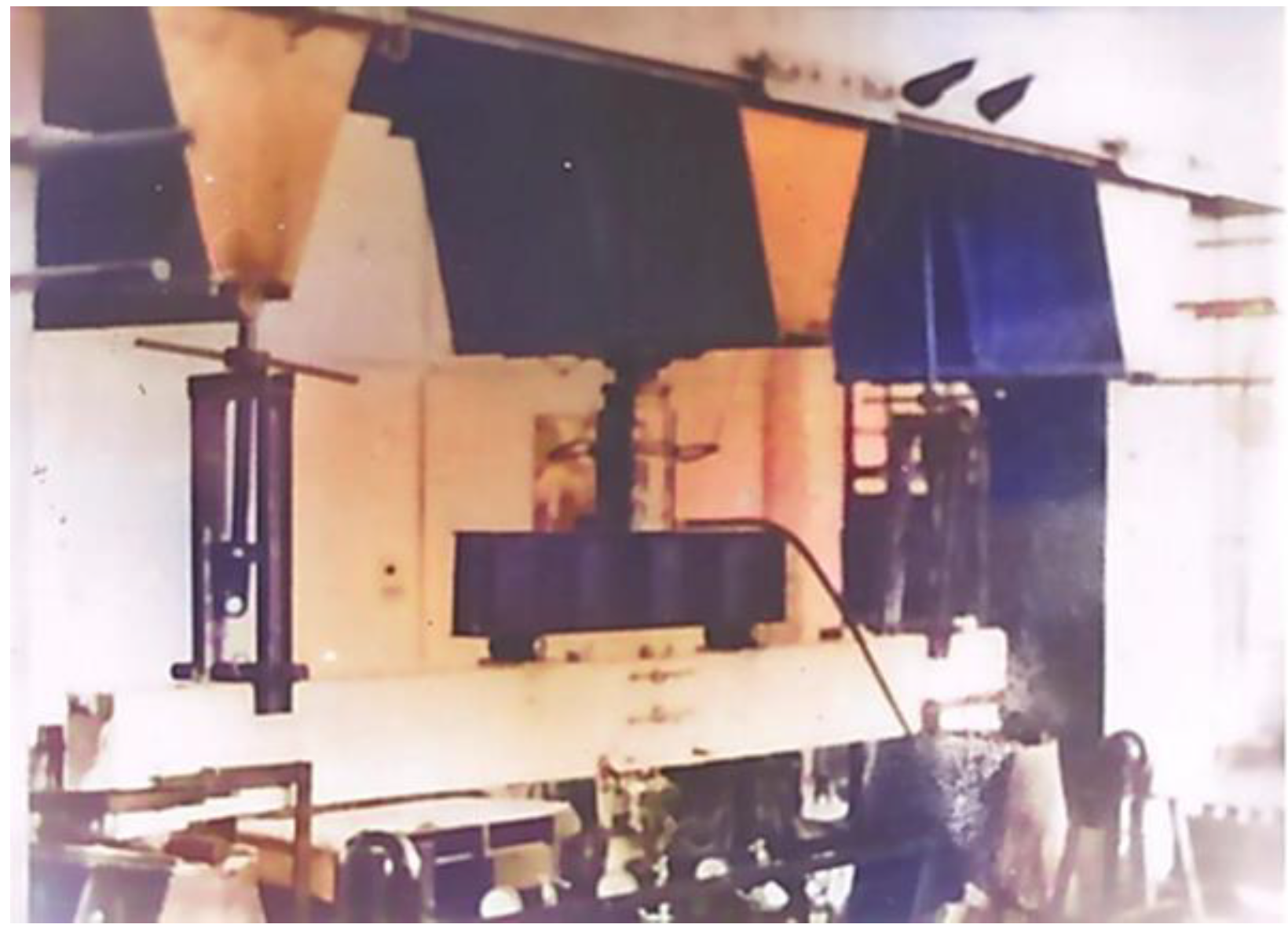
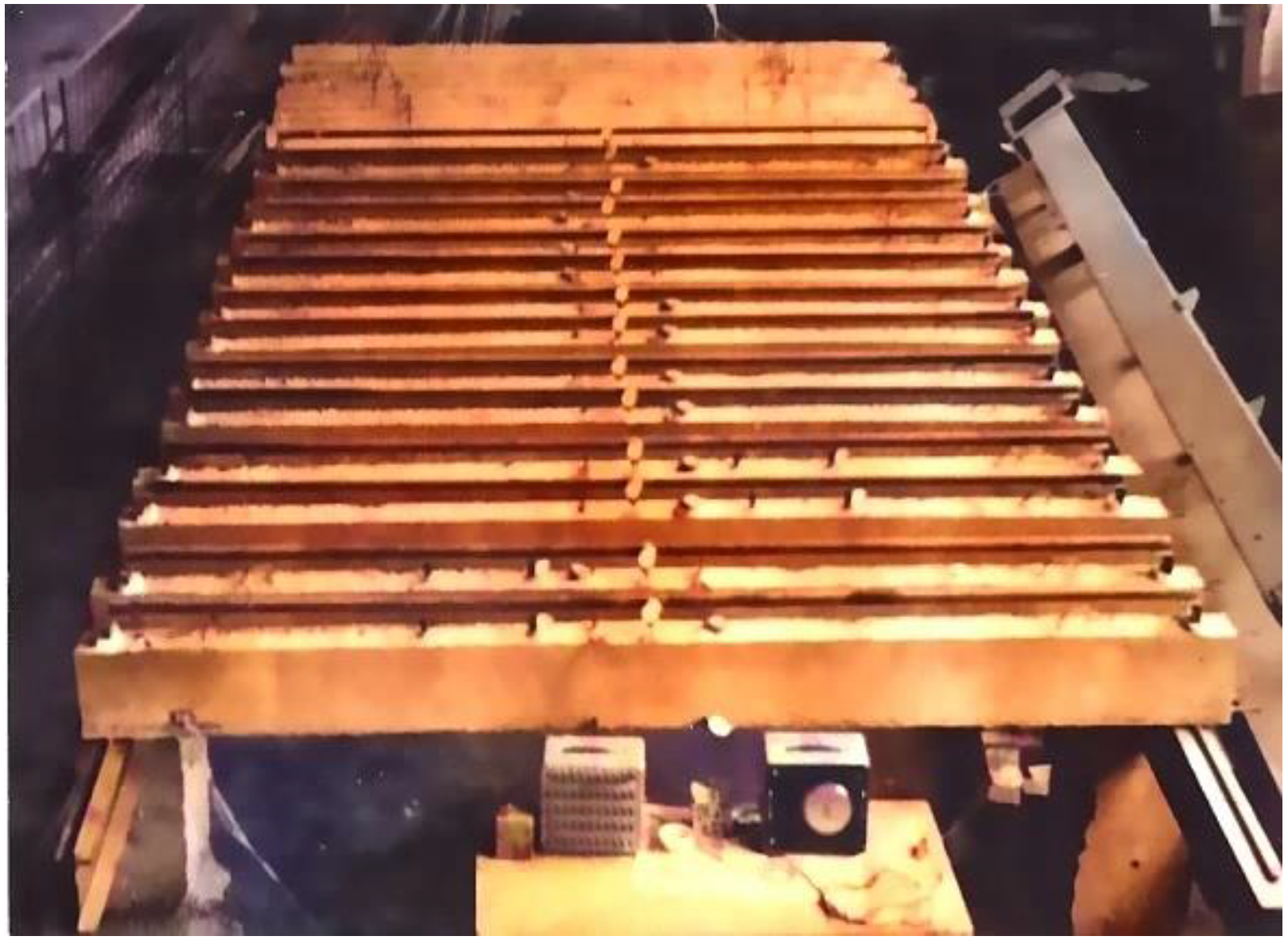



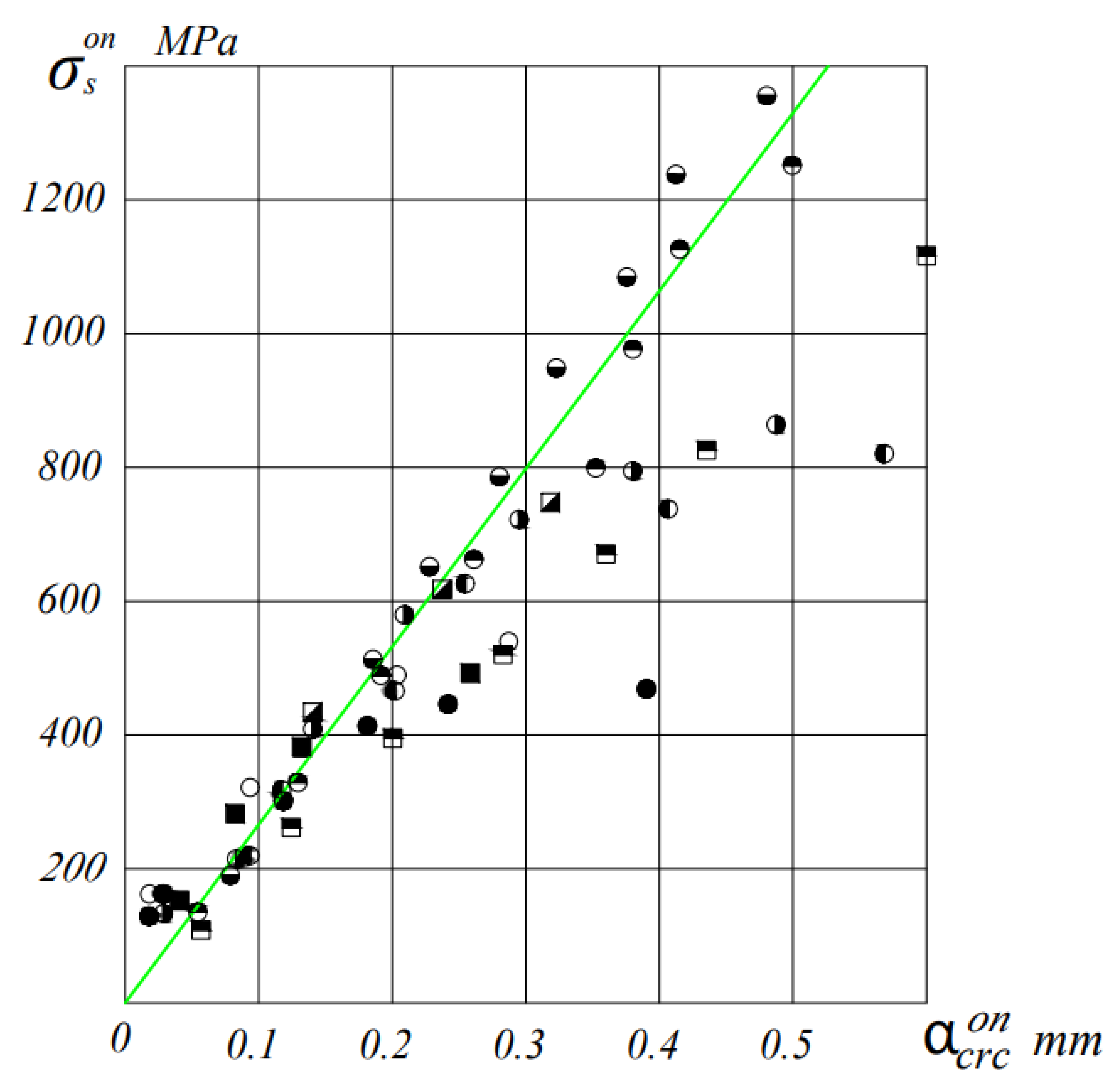
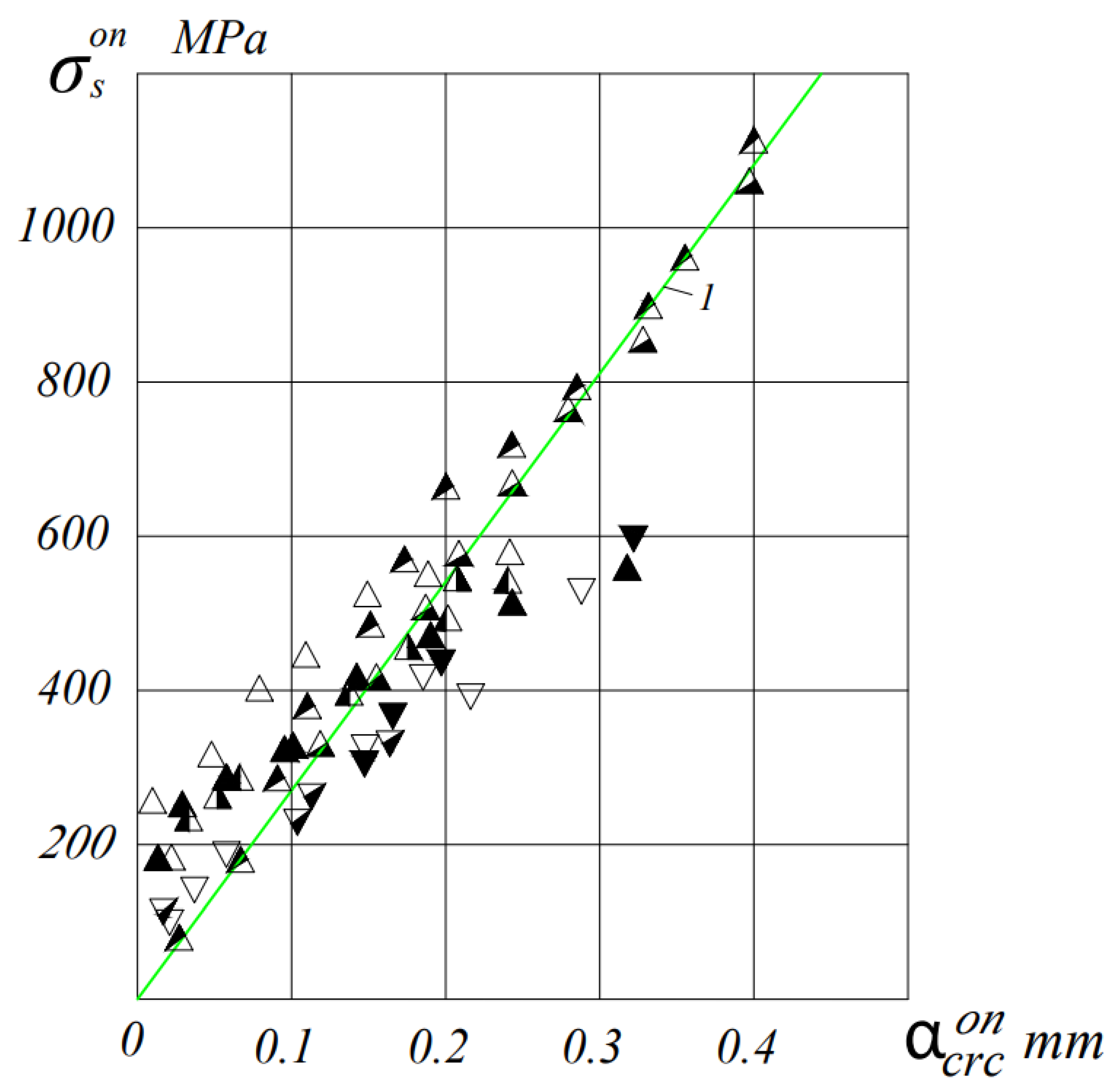
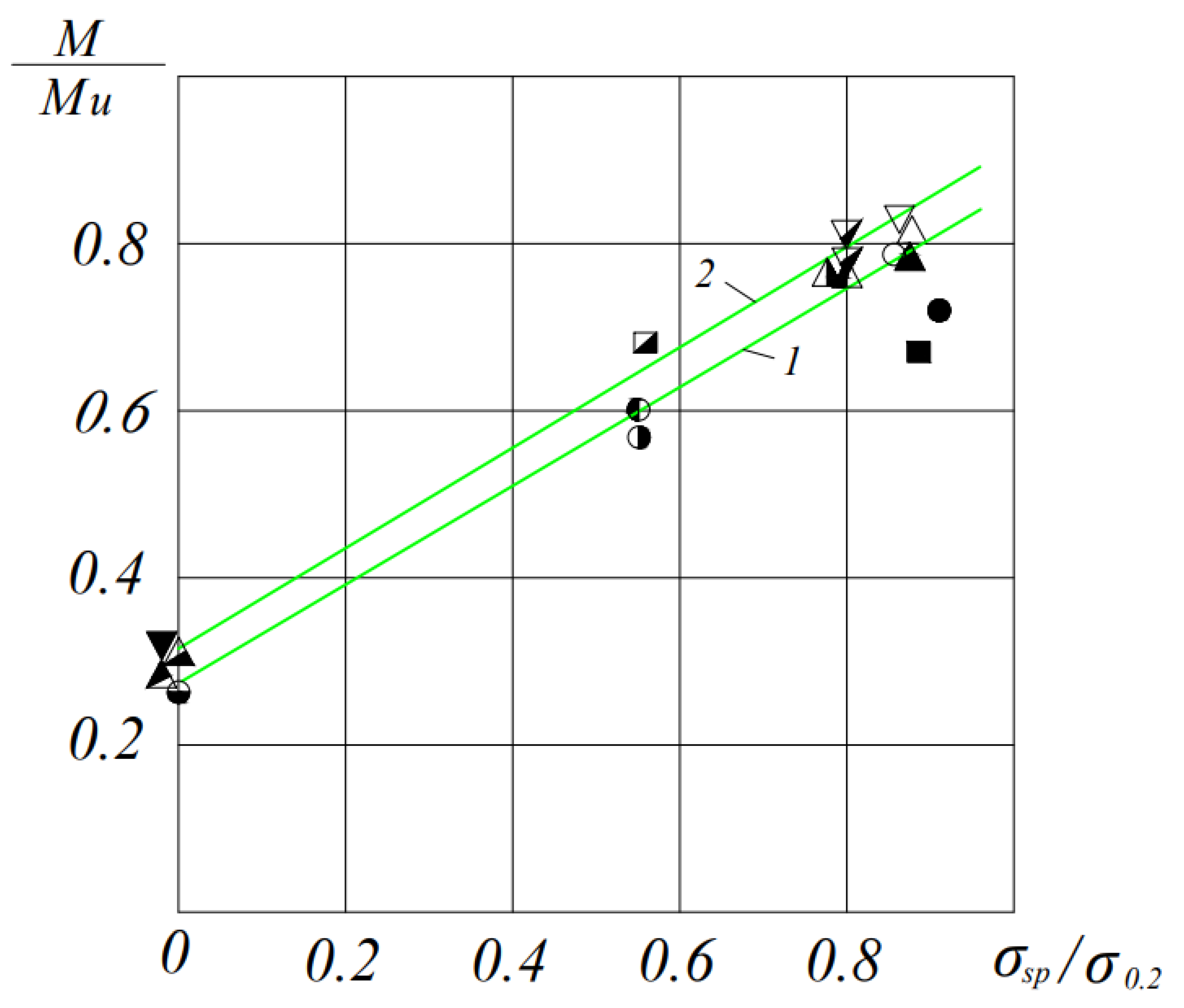
| Indicators | Unit of Measurement | Ceramporite Type 1 | Ceramporite Type 2 | ||
|---|---|---|---|---|---|
| Particle Sizes, mm | |||||
| 5–10 | 10–20 | 5–10 | 10–20 | ||
| Bulk density | Kg/m3 | 850 | 830 | 810 | 800 |
| Intergranular void volume | % | 44.3 | 45.8 | 45.1 | 46.3 |
| Porosity | % | 48.2 | 49.1 | 49.3 | 49.8 |
| Compressive strength in a cylinder | MPa | 6.9–8.2 | 5.4–6.8 | 4.0–4.9 | 3.0–3.9 |
| Water absorption after 1 h | % | 20.8 | 22.8 | 21.5 | 23.2 |
| Name of the Concrete | Material Consumption Per 1 m3 (kg) | ||||
|---|---|---|---|---|---|
| Cement, kg | Sand, kg | Filler | W/C (Water/Cement Ratio) | ||
| 5–10 mm | 10–20 mm | ||||
| Ceramporite concrete type 1 | 330 | 539 | 335 | 503 | 0.76 |
| Ceramporite concrete type 2 | 380 | 550 | 320 | 480 | 0.81 |
| Heavy concrete | 340 | 650 | 472 | 708 | 0.59 |
| Reinforcing Steel Grade/Class | Diameter, mm, d | Yield Strength, MPa, σ0.2 | Ultimate Strength, MPa, σu | Young’s Modulus, MPa Es·104 |
|---|---|---|---|---|
| K-7 | 9 | 1540 | 1765 | 191.0 |
| K-7 | 12 | 1512 | 1777 | 193.8 |
| Vr-II | 5 | 1480 | 1694 | 212.3 |
| Vr-I | 5 | - | 574 | 170.0 |
| Beam Code | , kN⋅sm | Coefficient | Theoretical Values by Formula (1) | × 100% | |||
|---|---|---|---|---|---|---|---|
| Excluding , kN⋅cm | Taking into account , kN⋅cm | ||||||
| 1 | 2 | 3 | 4 | 5 | 6 | 7 | 8 |
| BL19V-1 | 1595 | 0.46 | 0.91 | 1607.25 | 1566.0 | −0.76 | −1.82 |
| BL19V-2 | 1567.5 | 0.457 | 0.91 | 1602.50 | 1563.0 | −2.23 | 0 |
| BL19S-1 | 1100 | 0.339 | 0.92 | 1070.95 | 1037.80 | 2.64 | 5.65 |
| BL19S-2 | 1100 | 0.345 | 0.92 | 1076.87 | 1031.80 | 2.1 | 6.20 |
| BL19O-1 | 330 | 0.104 | 1.0 | 352.70 | - | −6.87 | - |
| BL19O-2 | 335.5 | 0.103 | 1.0 | 352.70 | - | −5.12 | - |
| BL112B-1 | 2090 | 0.437 | 0.81 | 2239.30 | 2084.47 | −7.14 | 0.26 |
| BLP2B-2 | 2090 | 0.437 | 0.81 | 2184.25 | 2095.82 | −4.51 | 0.28 |
| BL112S-1 | 1925 | 0.4375 | 0.85 | 2095.54 | 2025.73 | −8.86 | −5.23 |
| BLP2S-2 | 1980 | 0.439 | 0.85 | 2105.77 | 2035.96 | −6.35 | −2.82 |
| BL112O-1 | 330 | 0.0774 | 1.0 | 328.60 | - | 0.4 | - |
| BLP20-2 | 341 | 0.082 | 1.0 | 328.60 | - | 3.64 | - |
| BLP9V-1 | 1320 | 0.444 | 0.9 | 1444.20 | 1403.43 | −9.4 | −6.32 |
| BLP9V-2 | 1375 | 0.435 | 0.9 | 1438.90 | 1398.10 | −4.64 | −1.68 |
| BLP9S-1 | 990 | 0.327 | 0.92 | 1069.37 | 1036.30 | −8.02 | −4.67 |
| BLP9S-2 | 1100 | 0.37 | 0.92 | 1074.13 | 1041.06 | −2.35 | 5.35 |
| BLP9O-1 | 341 | 0.113 | 1.0 | 337.11 | - | 1.14 | - |
| BLP9O-2 | 357.5 | 0.113 | 1.0 | 337.11 | - | 5.7 | - |
| BLP12B-1 | 1925 | 0.4516 | 0.81 | 2101.43 | 2013.0 | −9.16 | −4.57 |
| BLP12B-2 | 1925 | 0.446 | 0.81 | 2088.87 | 2000.44 | −8.51 | 3.92 |
| BLP12S-1 | 1787.5 | 0.442 | 0.85 | 1954.91 | 1887.02 | −9.36 | −5.56 |
| BLP12S-2 | 1787.5 | 0.411 | 0.85 | 1979.38 | 1912.14 | −10.73 | 6.97 |
| BLP12O-1 | 302.5 | 0.0733 | 1.0 | 295.4 | - | 2.35 | - |
| BLP12O-2 | 302.5 | 0.0733 | 1.0 | 295.40 | - | 2.35 | - |
| BT9B-1 | 1210 | 0.478 | 0.82 | 1272.42 | 1215.50 | −5.16 | −0.45 |
| BT9B-2 | 1210 | 0.42 | 0.82 | 1281.00 | 1224.18 | −5.87 | −1.17 |
| BT9S-1 | 962.5 | 0.388 | 0.89 | 935.60 | 901.02 | 2.79 | 6.38 |
| BT9S-2 | 962.5 | 0.388 | 0.89 | 940.10 | 905.52 | 2.33 | 5.92 |
| BT9O-1 | 396 | 0.120 | 1.0 | 368.05 | - | 7.07 | - |
| BT9O-2 | 385 | 0.117 | 1.0 | 368.05 | - | 4.41 | - |
| BT12B-1 | 1815 | 0.455 | 0.73 | 1938.20 | 1839.10 | −6.78 | −1.32 |
| BT12B-2 | 1787.5 | 0.471 | 0.73 | 1916.94 | 1817.77 | −7.24 | −1.69 |
| BT12C-1 | 1787.5 | 0.433 | 0.73 | 1861.10 | 1716.03 | −4.11 | 1.48 |
| BT12C-2 | 1787.5 | 0.433 | 0.73 | 1896.50 | 1796.36 | −6.1 | −0.495 |
| BT12O-1 | 319 | 0.077 | 1.0 | 299.40 | - | 5.95 | - |
| BT12O-2 | 308 | 0.075 | 1.0 | 299.40 | - | 2.79 | - |
| Beam Code | Upper Level Repeat. Load_ M/Mu | At First Unloading | At Fourth Unloading | Crack Opening Width under Loading | Coefficient | ||||
|---|---|---|---|---|---|---|---|---|---|
| Crack Closure Moment , kN · cm | Voltage Compression σbp, MPa | Moment of Crack Closure , kN · cm | Compression Stresses σbp, MPa | First mm | Fifth mm | ||||
| 1 | 2 | 3 | 4 | 5 | 6 | 7 | 8 | 9 | 10 |
| BL19B-2 | 0.72 | 1100 | 0.73 | 1039.5 | 1.20 | 0.945 | 0.15 | 0.175 | 1.166 |
| BL19C-2 | 0.6 | 797.5 | −0.81 | 701.8 | −0.08 | 0.88 | 0.15 | 0.17 | 1.133 |
| BLP2B-2 | 0.78 | 1722.5 | 0.38 | 1650.0 | 0.905 | 0.96 | 0.15 | 0.16 | 1.07 |
| BLP2S-2 | 0.76 | 1729.7 | −0.75 | 1636.2 | −0.1 | 0.95 | 0.15 | 0.16 | 1.07 |
| BLP9B-1 | 0.79 | 1039.5 | 0.3 | 950.4 | 0.76 | 0.92 | 0.15 | 0.18 | 1.2 |
| BLP9S-2 | 0.56 | 653.4 | −0.06 | 594 | 0.4 | 0.91 | 0.15 | 0.165 | 1.1 |
| BLP12B-2 | 0.81 | 1727 | −0.66 | 1597.5 | 0.28 | 0.92 | 0.15 | 0.16 | 1.07 |
| BLP12S-1 | 0.75 | 1439.9 | 0.33 | 1355.3 | 0.94 | 0.94 | 0.15 | 0.16 | 1.07 |
| BT9B-2 | 0.66 | 953 | 0.7 | 895.1 | 1.16 | 0.94 | 0.15 | 0.17 | 1.133 |
| BT9S-1 | 0.67 | 693 | −0.5 | 643.5 | −0.1 | 0.93 | 0.15 | 0.17 | 1.133 |
| BT12B-2 | 0.84 | 1394.2 | 1.77 | 1251.3 | 2.85 | 0.90 | 0.15 | 0.17 | 1.133 |
| BT12C-1 | 0.76 | 1395.6 | 1.29 | 1236.1 | 2.49 | 0.88 | 0.15 | 0.17 | 1.133 |
Disclaimer/Publisher’s Note: The statements, opinions and data contained in all publications are solely those of the individual author(s) and contributor(s) and not of MDPI and/or the editor(s). MDPI and/or the editor(s) disclaim responsibility for any injury to people or property resulting from any ideas, methods, instructions or products referred to in the content. |
© 2023 by the authors. Licensee MDPI, Basel, Switzerland. This article is an open access article distributed under the terms and conditions of the Creative Commons Attribution (CC BY) license (https://creativecommons.org/licenses/by/4.0/).
Share and Cite
Yusufkhojaev, S.; Yusupov, R.; Alimov, X.; Makhmudov, J.; Choi, E. Crack Resistance of Prestressed Reinforced Concrete Beams with Wire Rope Reinforcement. Materials 2023, 16, 6359. https://doi.org/10.3390/ma16196359
Yusufkhojaev S, Yusupov R, Alimov X, Makhmudov J, Choi E. Crack Resistance of Prestressed Reinforced Concrete Beams with Wire Rope Reinforcement. Materials. 2023; 16(19):6359. https://doi.org/10.3390/ma16196359
Chicago/Turabian StyleYusufkhojaev, Saidgani, Rakhimbay Yusupov, Xikmat Alimov, Jaloliddin Makhmudov, and Eunsoo Choi. 2023. "Crack Resistance of Prestressed Reinforced Concrete Beams with Wire Rope Reinforcement" Materials 16, no. 19: 6359. https://doi.org/10.3390/ma16196359






